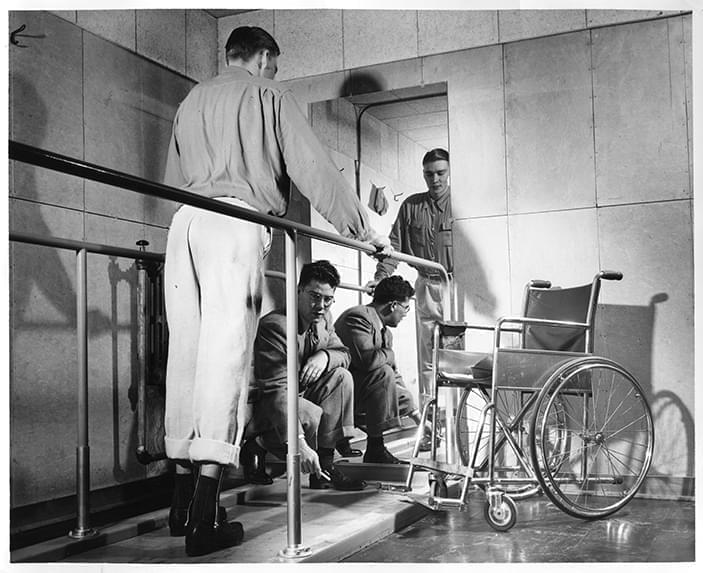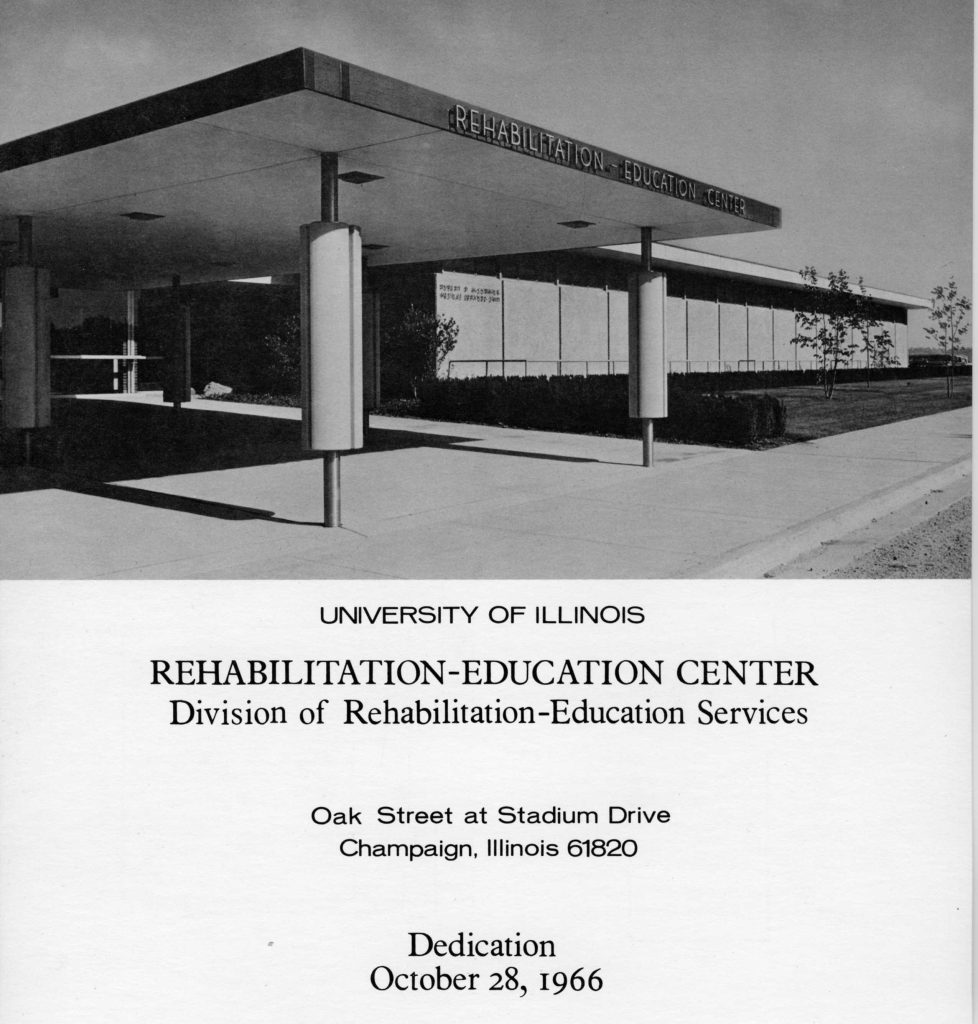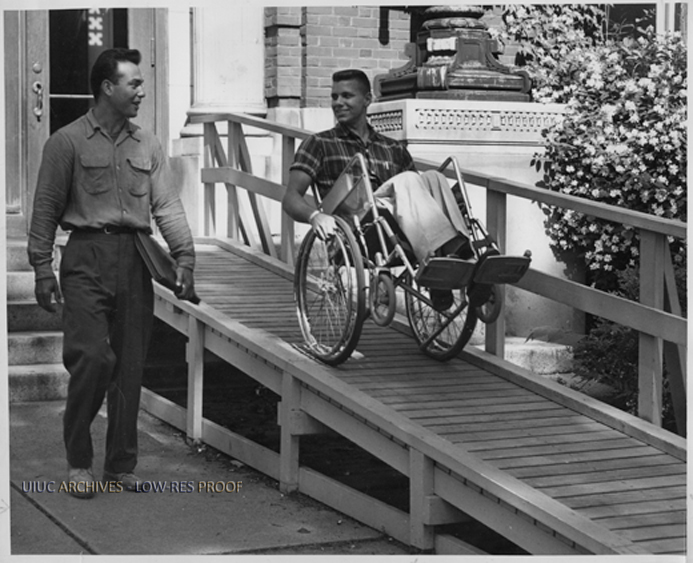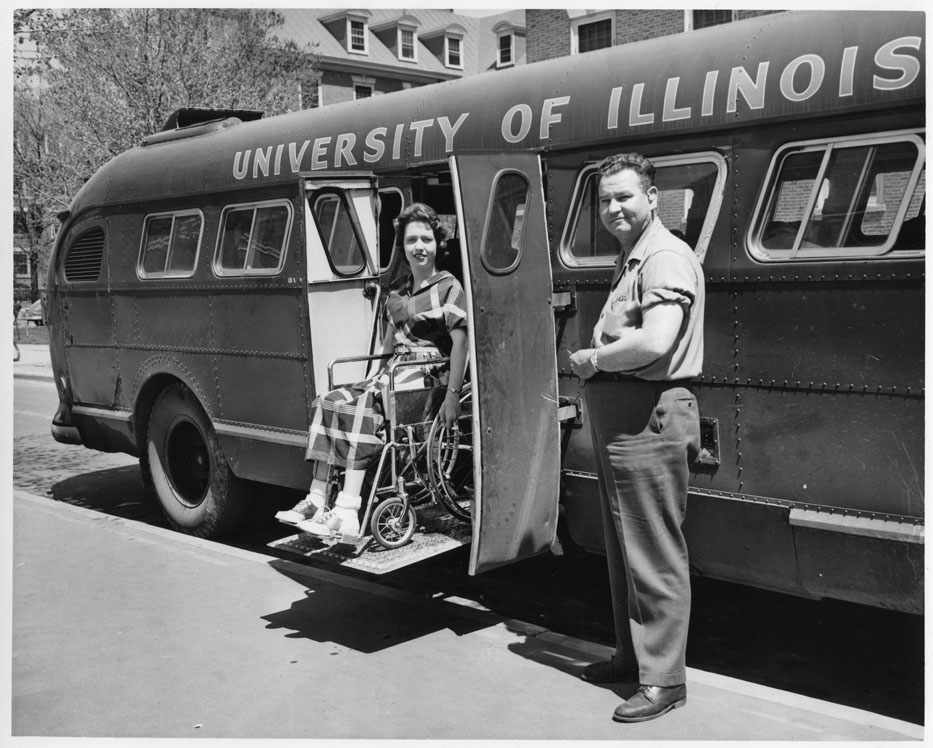
the History of DRES

In the 1947-48 academic year, a former Veterans Administration Hospital in Galesburg, Illinois, was converted into a satellite campus of the University of Illinois. This action was necessary to accommodate the many WW II veterans returning to the United States, who were seeking to utilize GI Bill funding to earn college degrees.
However, in 1949 it was decided that the Galesburg campus would be closed. At that time, the first act of self-advocacy by University of Illinois students with disabilities occurred, as they loaded into several cars and set off for Springfield to request that Governor Stevenson intervene to stop the closure. This event was so significant that on March 24, 1949, the headline of the Citizen’s Tribune of Springfield read, “Crippled Students Fight College Closing, Demand Branch at Galesburg be Maintained.” Clearly, the wording in the headline indicated that the students were battling far more than the closure of the Galesburg campus. Unfortunately, their gallant effort was not rewarded—the campus was closed.
After the Galesburg closure, the students continued their self-advocacy by seeking to move the “Rehab Program,” as it was affectionately called, to Urbana-Champaign. Of course, as one might expect, given the social climate captured in the aforementioned headline, support for the continuation of the program at the main UIUC campus was anything but widespread. Indeed, conventional wisdom held that individuals with such severe physical disabilities could not possibly live “normal” lives, could not have families, and could not obtain gainful employment. Therefore, they should not have their hopes unrealistically inflated by being granted access to a prestigious University of Illinois degree.
This great social experiment might have ended then and there had it not been for the fact that the group of self-reliant, self-advocating students with disabilities took their show on the road to Urbana-Champaign. Their goal in traveling to the main campus was to demonstrate that with minimal architectural and personal assistance, they could successfully negotiate the campus, and that they were more than equal to the challenge of the institution’s academic programs.


As a result of their day of demonstrations and enlightenment, the U of I rehabilitation program was begrudgingly granted provisional or “experimental” status at Urbana-Champaign. For the next six years, the students continued to advocate for themselves by demonstrating their abilities through a myriad of activities sponsored by Delta Sigma Omicron (DSO), including Sigma Signs, the DSO annual publication, and athletic exhibitions.
In 1954, a politically savvy group of DSO students succeeded in convincing Illinois Governor William Stratton to serve as the keynote speaker at the annual DSO awards banquet. Although the banquet had not previously been attended by University administrators, the Governor’s appearance packed the house. That evening, Governor Stratton gave a stirring speech on the benefits of rehabilitation and the importance of the effort under way at the UIUC. From that point on, although many battles would have to be fought and won in the war for egalitarian access, the program’s legitimacy was never again seriously questioned.
Over the ensuing years, DRES has helped thousands of students with disabilities earn college degrees and has made the Urbana-Champaign campus a leader in the area of post-secondary education for persons with disabilities. Indeed, as the oldest post-secondary disability support program in the world, DRES has been associated with many programmatic innovations, including:
- The seminal research which led to the development of the first architectural accessibility standards that would become the American National Standards Institute Standards;
- The first wheelchair-accessible fixed route bus system;
- The first accessible university residence halls;
- The first university service fraternity and advocacy group comprised of students with disabilities (Delta Sigma Omicron); and
- The first collegiate adapted sports and recreation program for students with disabilities, which also produced the first wheelchair athlete in the world to win an Olympic Gold Medal.
- For Access to DSO Sigma Signs through UIUC Archives, Click Here.



